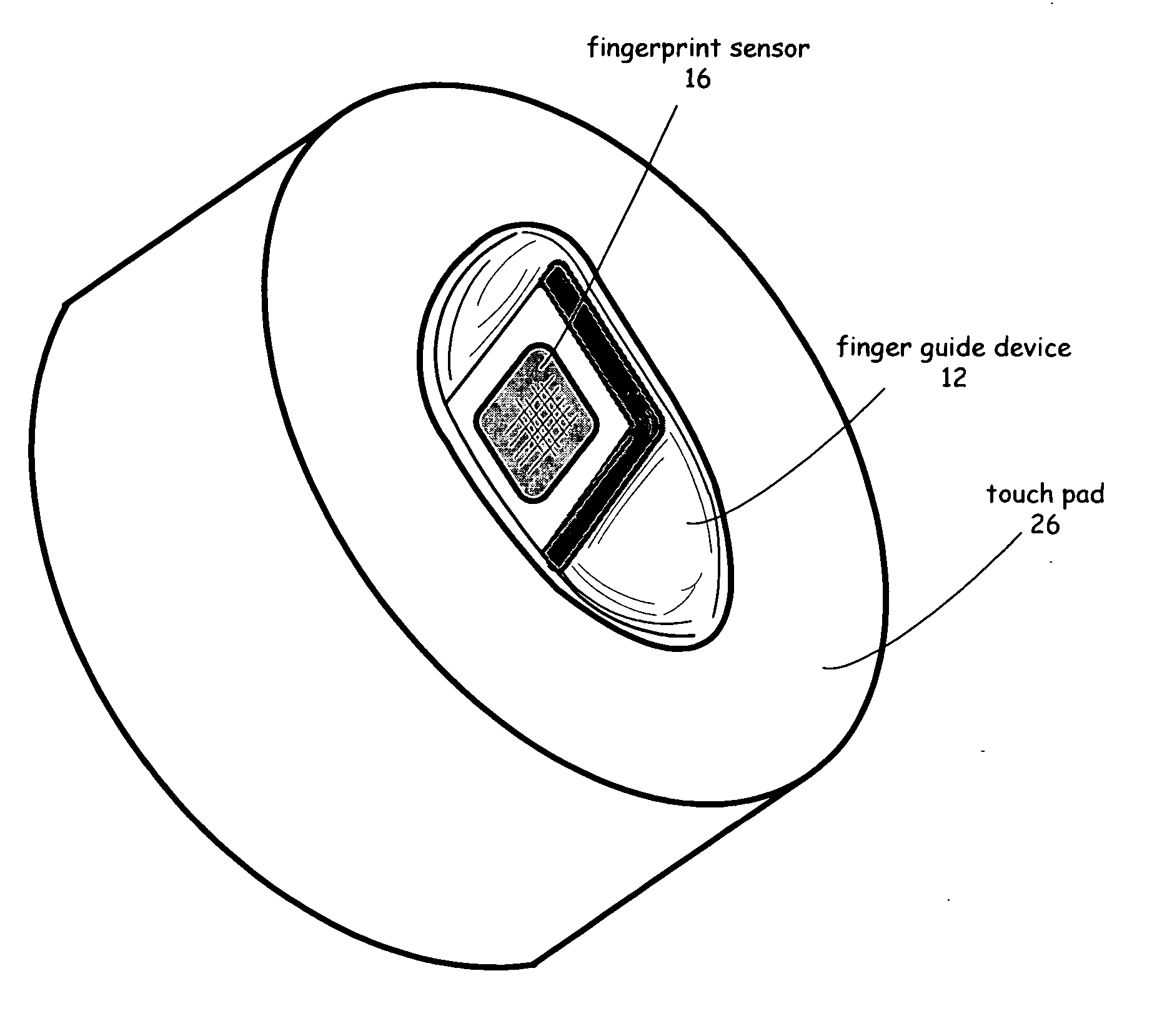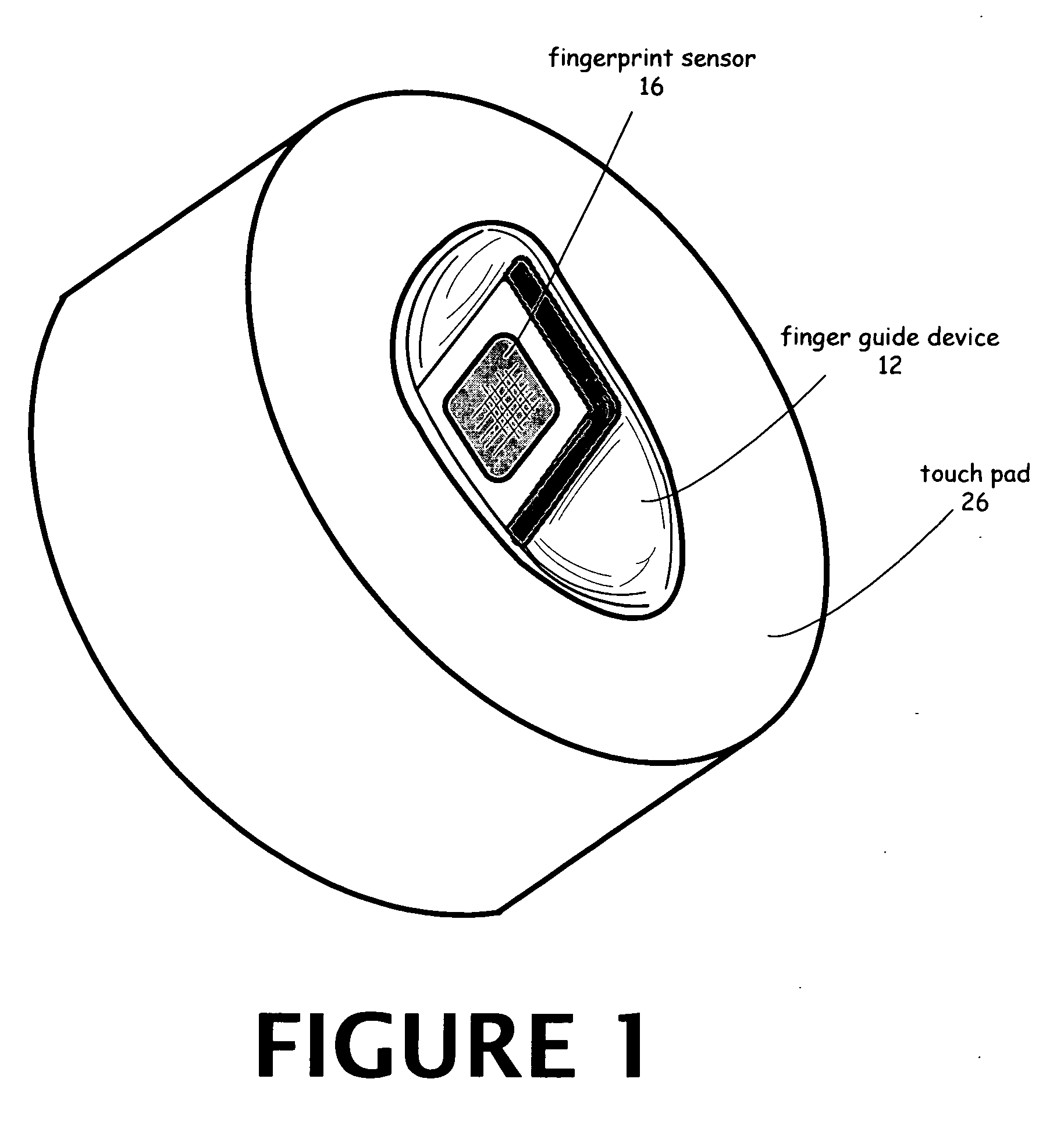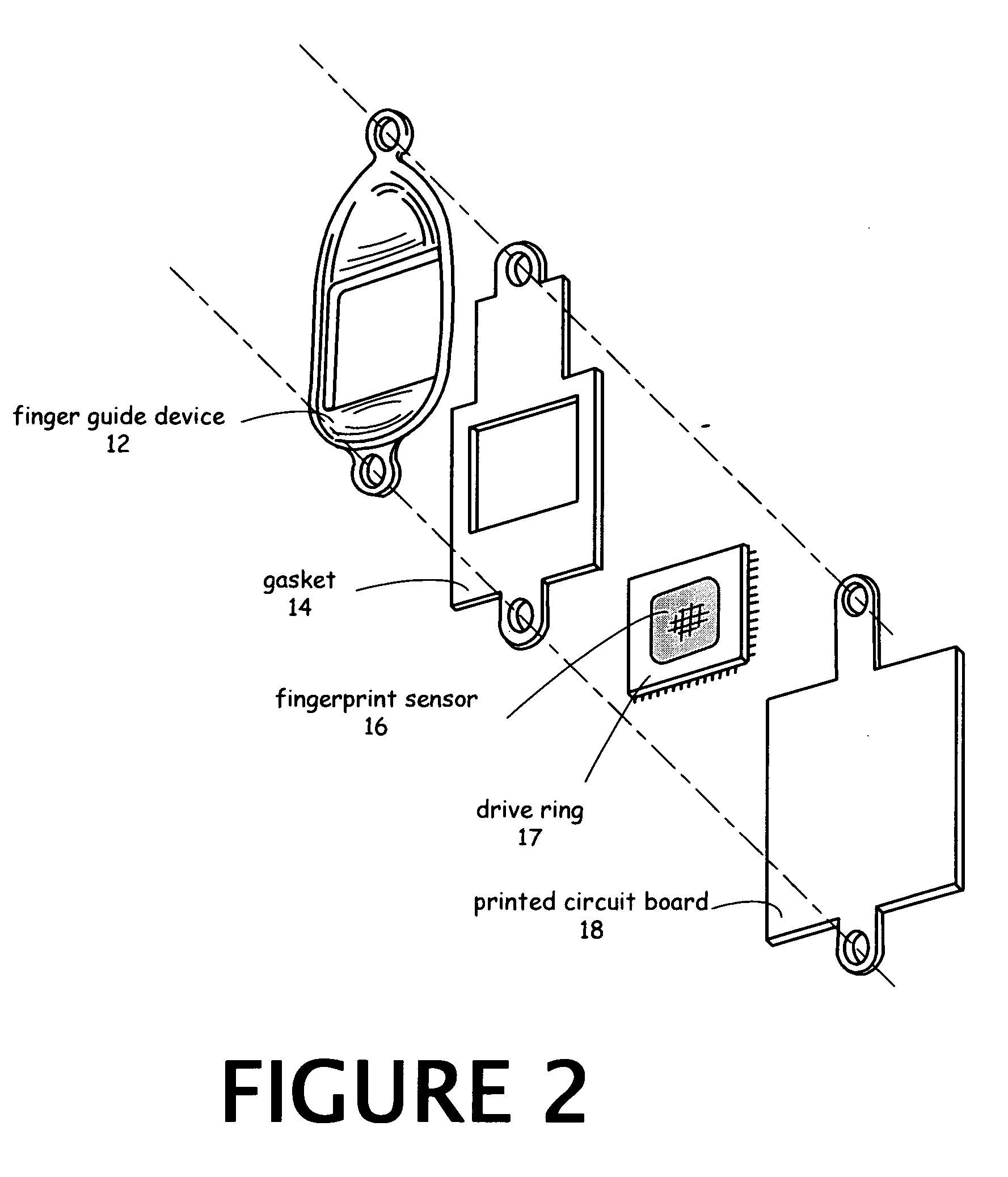Finger guide device
a finger guide and finger technology, applied in the field of finger guides, can solve problems such as discomfort of pressure on the nail tip, and achieve the effect of improving the overall performance of the finger guide device and the guiding effect of the mechanical recess
- Summary
- Abstract
- Description
- Claims
- Application Information
AI Technical Summary
Benefits of technology
Problems solved by technology
Method used
Image
Examples
Embodiment Construction
[0033] Fingerprint scanners or sensors are used in a variety of applications to capture relevant image data of a fingerprint for comparison with one or more stored fingerprint images or fingerprint templates. Devices that include fingerprint sensors may be designed only for the purpose of capturing a relevant portion of a fingerprint or the fingerprint sensor device may be included as part of a device with other additional purposes, such as a keyboard or a door lock or other device. The finger guide device of the present invention is intended for use in all of these devices and applications where a fingerprint scanner or sensor is desired.
[0034] Referring now to the drawings, in FIG. 1 the preferred embodiment of finger guide device 12 of the present invention is shown in alignment with a fingerprint sensor 16 wherein both the finger guide device and fingerprint sensor reside in a simple touch pad 26 housing to sit on a desk, countertop or other surface. This simple fingerprint pad...
PUM
 Login to View More
Login to View More Abstract
Description
Claims
Application Information
 Login to View More
Login to View More - R&D
- Intellectual Property
- Life Sciences
- Materials
- Tech Scout
- Unparalleled Data Quality
- Higher Quality Content
- 60% Fewer Hallucinations
Browse by: Latest US Patents, China's latest patents, Technical Efficacy Thesaurus, Application Domain, Technology Topic, Popular Technical Reports.
© 2025 PatSnap. All rights reserved.Legal|Privacy policy|Modern Slavery Act Transparency Statement|Sitemap|About US| Contact US: help@patsnap.com



